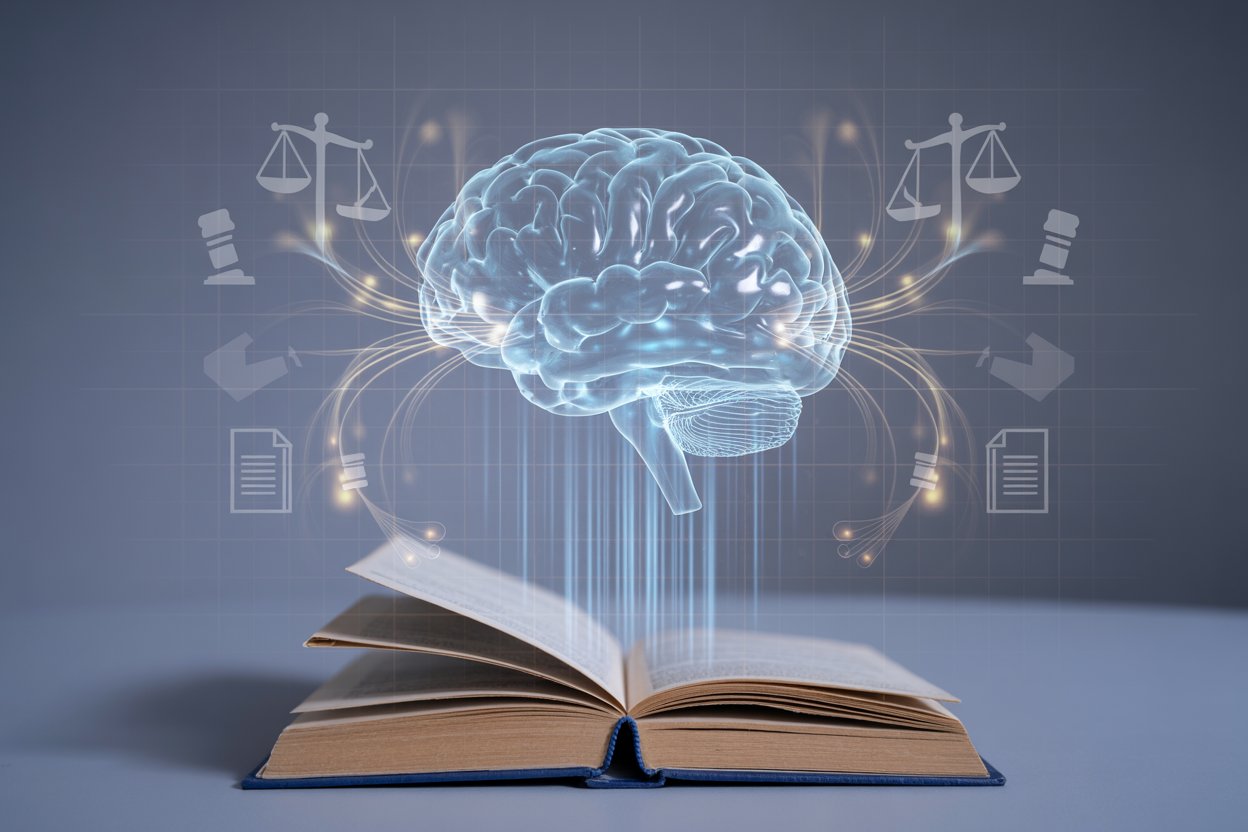94 Ways Lawyers Can Use AI to Improve Their Work
Most lawyers who avoid drafting and researching with AI do so for fear of hallucinations and making mistakes. It’s a valid concern. But they’re missing the real value.
AI isn’t about efficiency. At this stage of AI’s evolution, it’s better used to improve work than speed it up. Here are 94 ways AI can help you do better work, not just more work in less time.
Strategic Analysis & Planning
- SWOT analysis of cases, arguments, or strategic options: Systematically evaluate strengths, weaknesses, opportunities, and threats for individual documents and at every phase of a case.
- Risk modeling and probability weighting different outcomes: Assign likelihood percentages to different case results to make better strategic decisions.
- Anticipating opposing counsel’s strategy and counter-arguments: Think through what the other side will do so you’re not caught off guard.
- Settlement value analysis considering multiple variables: Calculate reasonable settlement ranges by weighing evidence strength, costs, risks, and precedent.
- Discovery strategy prioritization: Determine which documents and depositions will actually move the needle versus just generating billable work.
- Motion strategy including which battles to fight, timing, and sequencing: Decide which motions are worth filing and when to file them for maximum impact.
- Identifying case theory weaknesses before opposing counsel does: Find the holes in your narrative so you can address them proactively rather than defensively.
- “Should I take this case” intake analysis: Evaluate whether a potential case fits your expertise, has merit, and is worth the investment.
- Resource allocation decisions: Determine where to focus limited time, money, and personnel for best results.
- Long-term strategic legal planning for business clients: Help corporate clients anticipate and prepare for legal issues before they become problems.
- Negotiation scenario simulation for how counterparties might respond: Model how the other side will react to your proposals to avoid dead ends.
- Settlement pattern modeling to predict likely windows or valuation bands: Use data from similar cases to estimate when and for how much cases typically settle.
Legal Reasoning & Research Quality
- Case law relevance scoring for how analogous precedents really are: Grade how closely prior cases match your facts rather than just citing everything remotely related.
- Distinguishing cases by finding material differences: Identify why unfavorable precedent doesn’t actually apply to your situation.
- Analogical reasoning to build bridges between precedents: Connect cases from different contexts to support novel legal arguments.
- Spotting potential conflicts in doctrine: Find where different lines of authority contradict each other, which might give you strategic options.
- Identifying stronger authorities not yet considered: Discover better cases or statutes you missed in initial research. Just be sure to verify.
- Understanding nuanced distinctions in holdings: Grasp subtle differences between what courts actually held versus dicta or broader language.
- Case outcome modeling based on fact patterns, judge, and jurisdiction: Predict likely results by analyzing similar cases with similar variables.
- Legal theory stress testing with emerging doctrines: Explore how new legal developments might affect established areas of law.
- Historical context retrieval of long-forgotten illuminating cases: Find older precedent that provides doctrinal foundation for modern arguments.
- Authority weighting by persuasive relevance not just citation frequency: Prioritize cases that are factually similar and well-reasoned, not just frequently cited.
- Fact-pattern matching across jurisdictions beyond keyword searches: Find relevant precedent based on factual similarity even when different terminology is used.
- Conflict and trend detection in judicial attitudes: Notice when courts are moving toward or away from certain legal positions.
- Citation network mapping to identify which authorities specific judges cite most: Learn which precedents will be most persuasive to your particular judge.
Litigation Preparation & Performance
- Cross-examination strategy and question development: Design question sequences that lock witnesses into positions or expose contradictions.
- Deposition preparation for both questioning and defending: Plan your examination strategy or prepare your client for hostile questioning.
- Witness preparation including anticipating tough questions: Get witnesses ready for the hardest questions they’ll face so they don’t fall apart on the stand.
- Opening and closing statement development: Craft compelling narratives that frame the case favorably from the start and close with impact.
- Jury instruction analysis: Understand which instructions favor your theory and how to argue for or against specific language.
- Jury theme testing for resonance with decision-makers: Evaluate whether your case themes and framing will connect emotionally and logically.
- Timeline construction from document sets: Automatically organize events chronologically from scattered evidence.
- Witness reliability scoring using linguistic cues in transcripts: Analyze speech patterns for signs of evasiveness, confidence, or deception.
- Mock argument generation for realistic practice simulations: Create practice scenarios that mirror actual hearings or trials.
Evidence & Factual Analysis
- Pattern recognition across voluminous discovery data: Spot repeated behaviors, phrases, or events in massive document productions that reveal important facts.
- Detecting recurring details or contradictions in evidence: Find inconsistencies across multiple sources that undermine or support credibility.
- Evidence corroboration checking internal consistency: Verify that different pieces of evidence tell the same story or identify discrepancies.
- Document integrity checks comparing drafts for subtle language shifts: Track how key language changed between versions to understand intent or consciousness of wrongdoing.
- Chain of custody mapping and visualization: Document the path of evidence to ensure admissibility and identify gaps.
- Multimodal review cross-analyzing photos, videos, and text: Compare different types of evidence to find corroboration or contradictions others might miss.
Judicial & Opponent Intelligence
- Judge profiling including past rulings, tone, and reasoning tendencies: Learn how your judge thinks, what arguments they find persuasive, and their temperament.
- Opponent playbook prediction from their prior filings: Study opposing counsel’s patterns to anticipate their procedural moves and arguments.
- Forum advantage analysis comparing how similar cases fared across venues: Determine which court or jurisdiction gives you the best chance of success.
- Internal precedent heatmaps showing which arguments or motions yielded best outcomes: Learn from your firm’s past successes and failures on similar issues.
Transactional & Corporate Work
- Clause benchmarking against industry norms or competitor filings: Compare your contract terms to market standards to assess if you’re getting a good deal.
- Risk distribution visualization showing where contractual risk concentrates: Identify which party bears the most risk across all provisions, not just obvious ones.
- Regulatory alignment review detecting compliance misalignments: Find subtle ways your contracts or policies conflict with applicable regulations.
- Post-closing lessons database to improve future drafting: Capture what went wrong or right in past deals to inform future negotiations.
- Alternative legal theories for transactions not yet considered: Identify creative structuring options you haven’t thought of.
- Creative settlement structures beyond standard terms: Design novel resolution frameworks that create value both sides can accept.
Critical Thinking Enhancement
- “What am I missing” analysis on any work product: Force yourself to identify blind spots and gaps in your analysis.
- Playing devil’s advocate against your own arguments: Attack your position as vigorously as opposing counsel will.
- Stress-testing legal theories: Push your arguments to their logical limits to see where they break down.
- Identifying implicit assumptions you’re making: Surface the unstated premises your argument depends on.
- Finding logical gaps or unsupported leaps: Catch places where your reasoning doesn’t actually connect point A to point B.
- Spotting when you’re reasoning from conclusion backward: Notice when you’re cherry-picking facts to fit a predetermined outcome.
- Argument tree mapping to visualize logical pathways and weak links: Diagram how each piece of your argument connects and where it’s vulnerable.
- Analytical red teaming to find internal inconsistencies: Have AI actively try to find contradictions within your own position.
- Bias checking to detect confirmation bias in argumentation: Identify when you’re only seeing evidence that supports your view.
Client Advisory & Communication
- Explaining complex legal concepts in layperson terms: Translate legal jargon into plain language without losing accuracy.
- Risk communication strategies: Present legal risks in ways clients can understand and act on.
- Scenario planning and forecasting likely outcomes: Give clients realistic expectations about what might happen.
- Dynamic risk dashboards visualizing overall litigation or compliance exposure: Create visual summaries of a client’s total legal risk across all matters.
- Strategic options memos with pros, cons, and likely outcomes: Present decision frameworks that help clients choose among alternatives.
- Plain language translation of legal documents: Convert contracts or filings into readable summaries.
Complex Problem Understanding
- Breaking down complex factual scenarios: Organize messy, interconnected facts into comprehensible components.
- Understanding technical or industry context: Get up to speed on specialized subject matter relevant to the case.
- Identifying hidden legal issues in transactions: Spot problems in deals that aren’t obvious on first review.
- Regulatory compliance analysis across jurisdictions: Determine how different state or federal rules apply to multi-jurisdiction situations.
- Multi-party dynamic modeling: Understand how different parties’ interests and incentives interact in complex disputes.
- Interdisciplinary insight mining from economics, psychology, or data science: Apply expertise from other fields to strengthen legal analysis.
Ethical & Risk Analysis
- Spotting potential conflicts of interest: Identify situations where representing one client might compromise another.
- Analyzing gray-area ethical situations: Think through professional responsibility issues that aren’t black and white.
- Ethics issue forecasting for downstream consequences of borderline conduct: Predict where current actions might create future ethical problems.
- Crisis scenario generation for regulatory or reputational events: Plan responses to potential disasters before they happen.
- Compliance horizon scanning for pending regulations or bar opinions: Stay ahead of legal changes that will affect clients or your practice.
- Internal policy consistency checks across HR, privacy, and environment, social and governance (ESG): Ensure firm or client policies don’t contradict each other.
Cognitive Enhancement & Creative Thinking
- Metaphor and analogy finder for compelling rhetorical frames: Develop memorable ways to explain your case to judges or juries.
- Legal storyboarding to create narrative arcs making complex facts intuitive: Structure your presentation so the story makes sense.
- “What if” modeling to explore counterfactuals: Consider how different facts or decisions would have changed outcomes.
- Uncertainty mapping to quantify known unknowns: Identify what you don’t know and prioritize further investigation.
- Creative solution development including novel argument construction: Generate arguments or approaches you wouldn’t have thought of alone.
- Alternative interpretation generation for ambiguous statutes or clauses: Find different reasonable readings of unclear legal text.
- Procedural creativity around jurisdiction, venue, and timing: Identify unconventional procedural strategies that give you advantages.
Knowledge Management & Firm Intelligence
- Firm precedent mining to surface winning motions or memo sections: Search your firm’s past work for successful templates.
- Knowledge graph building linking similar issues, experts, and authorities: Connect related legal concepts, people, and resources across matters.
- Expert witness matching based on factual complexity and jurisdiction: Find the right expert whose background fits your specific case needs.
- Knowledge lifecycle tracking to flag outdated precedent or templates: Get alerts when cases are overruled or law changes.
- Team reflection summaries after major matters: Capture lessons learned while they’re fresh.
- Learning feedback loop tracking which AI insights appear in successful outcomes: Measure which AI-generated ideas actually prove useful.
Professional Development
- Personal legal coach delivering micro-lessons tailored to knowledge gaps: Get targeted training on areas where you need improvement.
- Debrief assistant summarizing what strategies worked after cases: Systematically review what worked and what didn’t.
- Knowledge reinforcement testing recall of precedent and procedure: Quiz yourself to ensure you actually remember important law.
- Mentorship emulator modeling advice from top practitioners: Learn approaches from leading lawyers through their published work.
Every item on the list above requires lawyer review and oversight. However, there is no doubt in my mind that every lawyer can benefit their clients using one, some or many of the suggestions. IMO, one insight gained in a case can make all the difference.
AI gives lawyers the ability to analyze more precisely, argue more persuasively, and advise more wisely. It helps you find the questions others forget to ask. Used well, it’s not a replacement for expertise but an amplifier of it.

Jon Dykstra, LL.B., MBA, is a legal AI strategist and founder of Jurvantis.ai. He is a former practicing attorney who specializes in researching and writing about AI in law and its implementation for law firms. He helps lawyers navigate the rapid evolution of artificial intelligence in legal practice through essays, tool evaluation, strategic consulting, and full-scale A-to-Z custom implementation.







